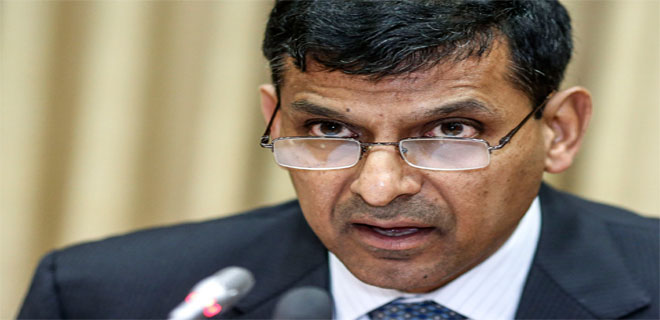Road to recovery
Repo rate now stands at 6.5%, the lowest since March 2011

After days of speculation, the RBI finally announced a 25 basis point reduction in the repurchase rate or repo rate, which is the rate at which banks borrow from the central bank. The repo rate now stands at 6.5 per cent, which is the lowest it has been since March 2011. At the same time, the central bank cut the reverse repo, or the rate at which banks park excess funds with the central bank, to 6 per cent. The gap between the two indicative rates now stands at 50 bps, bringing the marginal standing facility (MSF) rate to 7.0 per cent. The Bank Rate which is aligned to the MSF rate also stands adjusted to 7.0%. But the CRR has been kept unchanged at 4.0 per cent of net demand and time liabilities.
In his media briefing, the RBI governor, Raghuram Rajan, did mention his concerns over banks passing on the benefits of the cuts to customer. The earlier argument that there was not enough liquidity in the system does not hold anymore, which could mean that one can expect borrowing rates to go down. This is a good move for borrowers – small and big. The take-off on corporate borrowings is expected to trigger the investment cycle, which should revive the economy.
For policy watchers, the rate cut indicates that the RBI has taken note of the central government’s commitment to fiscal discipline, freeing it up to infuse more liquidity into the system. Further, the retail inflation seems to have finally been brought under control; inflation has eased to 5.18 per cent in February. While that is still higher than the RBI’s own target of 5 per cent for March 2017, expectations are that it could fall to as low as 4 per cent in coming months. Expectedly, the stock markets' immediate reaction was not too enthusiastic, with the Sensex witnessing a tremendous fall and ending day 516 points down, which was expected. The impact of the cuts will take a while to be witnessed.
Instant view on monetory policy from experts
Murthy Nagarajan, Head-Fixed Income, Quantum AMC
The RBI rate reduction was as expected but its measures on liquidity is an attempt to improve and speed up the transmission. Its move to bring system liquidity to neutral along with the narrowing of the corridor to 50 bps and CRR maintenance @ 90 per cent will allow overnight rates to remain very close to the Repo rate or even drift marginally lower. We expect proactive OMOs to get the 'Core' liquidity deficit back to zero.
Markets seem to have as of now ignored the projected increase in inflation expectations by RBI and its rhetoric on impact of sixth pay recommendation.
Although the door for another rate cut is open; but the bar is high now. We will await monsoon clarity and Fed outlook to form our view on the next rate cut.
But for bond markets; the assurance on liquidity should result in term spreads compressing. Currently the 10 year @ 7.4% is at 90 bps spread over the repo rate of 6.5%. If RBI continues its OMO and lpro-active liquidity management; this spread may fall.
Lakshmi Iyer, Chief Investment Officer (Debt) & Head Products, Kotak Mutual Fund
While the 25 bps repo was on expected lines, the rebasing of reverse repo and MSF rates was a positive surprise. RBI is taking a nuanced position since the inflation expectations may now begin to account in the impact of the monsoon and of the 7th pay commission. The overall stance remains accommodative.
We believe that if the inflation conditions remain well within RBI’s tolerance, further room for rate cuts may get generated. Liquidity measures to continue to drive short -term yields Lower. We continue to recommend duration to our existing investors. Accrual funds can be looked at by investors, since the possibility of spread compression has increased.
Vidya Bala, Head –Mutual fund Research at FundsIndia.com
Rate cut to provide benefit to your loans and your investments
The RBI, in its first bi-monthly Monetary Policy Review for 2016-17 cut repo rate by 25 basis points to 6.5%. It also cut the Marginal Standing Facility (MSF) used by banks to borrow from the RBI for overnight funding requirements against their government security holdings – by 75 basis points to 7%. It raised the reverse repo rate by 25 basis points to 6%.
The debt market gave a thumbs-up to the rate cut with the 10-year gilt falling from 7.43% to 7.39% before settling at 7.41% levels. The equity market, though, appeared confused, perhaps disappointed with the quantum of rate cut.
What it means
With the present rate cut, the RBI has cut a total of 150 basis points since the beginning of 2015 when rate easing began. The rate cut, together with the ongoing liquidity injection measures including MSF means that banks will have easier access to funds at reasonable rates. That also means they would have little choice but to up the pace of rate transmission to borrowers.
Impact on debt funds
The rate cut can be expected to benefit all medium to long duration debt funds, holding both gilt as well as corporate bonds. A fall in gilt yield will provide capital appreciation opportunities. It will also narrow the spread between gilt and corporate bonds, thus providing bond appreciation as well.
Gilt and dynamic bond funds have already seen as much as 3-4 % appreciation beginning 2016. This was a result of long term rates (10-yer gilt) falling from 7.76% in end December 2015 to 7.43% over the past 3 months. However, we do not expect any upfront gains from such a yield fall. Gains are likely to be spread out this financial year and a few months into the next fiscal as well as inflation, monsoon, and impact of pay commission provide more data points for RBI’s future moves.
While short-term rates will eventually ease (as the impact of using marginal cost of lending for new loans kicks in), short-term debt funds holding short-to-medium bonds will still stand to gain from the rate ease as the bonds they hold may see a price appreciation.
Good entry point for investors
With lower bank rates and lower small-saving rates, long-term investors have little choice but to diversify into income funds for superior returns and tax efficiency.
While the gain over the next few months may be better felt in funds with longer average maturity, we believe more sustained returns will be had from income accrual funds investing in corporate bonds. Hence investors looking for long-term exposure can consider a combination of dynamic bond and income accrual funds to gain from a rate rally and a more sustained accrual and re-rating rally (of bonds).
For those having long-term loans, the current rate decline regime can free up some funds for investing. A rate cut in long-term commitments such as home loans (base rates for existing loans will also eventually fall, even as the immediate rate cut benefit will be seen for new loans following MCLR) would also free up some money in the hands of the investor. A 30-50 basis point rate cut for a 15-year home loan for instance can free up at least Rs 1500-2000 more for you to invest. Investors must plough such surplus in equity funds through SIPs. The current equity market also provides ripe ground for averaging.
Radhika Rao, Economist, Group Research, DBS Bank:
Tuesday’s policy was along expected lines on the rates front, but carried a bigger emphasis on liquidity conditions. Along expected lines, the RBI cut the benchmark rate by 25bps to 6.5% on Tuesday, with an accommodative bias contingent on monsoon progress, direction of headline/ core CPI inflation and transmission process.
It was a prudent move to defer a bunched up move, especially in light of the uncertainty that surrounds the impact and extent of the pay commission changes. To recap, the impact of higher public sector wages and housing allowance adjustments are not yet factored into the central bank’s inflation estimates.
Meanwhile, today’s decision was more focused on addressing liquidity shortage and easing the transmission mechanism. There is a significant shift in their emphasis on the NDTL framework, narrowing the corridor around the operational repo rate and CRR changes. This is to ensure that the easy policy stance percolates to the real economy and materially lowers financing costs. These changes are likely to provide positive impetus to the financial markets in the near-term.
Ritesh Jain, Chief Investment Officer, Tata Asset Management Ltd
We believe that with the latest cut RBI is nearing the end of its policy easing cycle. It may be noted that, Reserve Bank of India had earlier underlined inflation-adjusted interest rate of about 1.0-1.5% - as appropriate for the current phase of Indian economy. Based on the one-year Treasury bill rate and one-year inflation expectation of 5%, the real interest rate as on now stands in the range of 1.5-1.75%, thus there still exists a small window of opportunity for further monetary easing by a maximum of 25 bps. However, a cut beyond 25bps, will only lower the real rate below RBI’s comfort range, given the upside risks to inflation pointed out by RBI.
The RBI measures to bring the system liquidity to neutral along with the narrowing of the corridor to 50 bps and CRR maintenance at 90 percent will allow overnight rates to remain very close to the repo rate or even drift marginally lower. This will ensure that the easy policy stance percolates to the real economy and materially lowers financing costs.
Bond Market Reaction
The reaction of the bond market has been quite muted, as the market had already rallied by 15-20 bps in the run up to the policy announcement in the expectation of 25 bps rate cut. In fact the bond yields have softened quite substantially in the last month (by 40-45bps) post the budget announcement and retail inflation for the month of February 2016.









